Lapa, the most Bohemian quarter of Rio
Lapa is an area in Rio de Janeiro which is situated right in the centre of the city. However, if you ask the locals, they will refer to it as its own neighbourhood, and call it 'the most Bohemian district in Rio de Janeiro'.

Nowadays, it is known for its many tourist activites, for its cultural events and for having two great pieces of architecture very popular with visitors: 'El Arco de Lapa' and 'Las Escaleras Selarón'.
Lapa, which was affected for centuries by poverty, has since established itself as a cultural site. It has been restored by the local council, making sure its original architecture has been conserved.
In the past, and even today, as well as its famous buildings, Lapa is known for its night life and as a major destination for the city's greatest parties. It has several "barzinhos" discos but you can also find famous cabarets (eg the famous Montmartre Carioca) and many restaurants which have been visited by great artists (and not just celebrities, but also by intellectuals and politicians of the world).
There are people from all walks of life, professions and backgrounds who come together in this neighborhood. Far from conservative and traditional values, Lapa is capable of mixing all of these styles and cultures, making itself an important source of artistic inspiration.
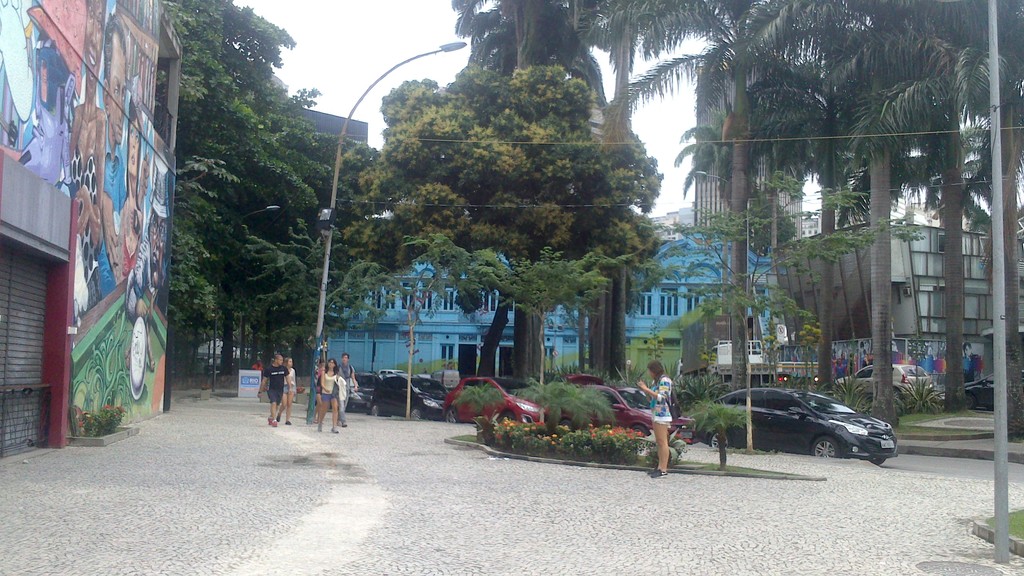
During the day, it is a quiet neighborhood where you can wander the winding streets and visit the tourist spots and small bars, yet during the night, it is transformed completely and replaced with nightlife, crime and alcohol. Every Friday at 22:00, under the 'Arcos de Lapa', the streets are closed and the whole neighborhood is transformed into a multicultural party, where people of all kinds come together to dance, drink caipirinhas in the bars and restaurants, and the samba bars... which all take part in the 'Carioca' night (night of the Rio natives). Drinking alcohol is still allowed in the streets of Brazil, so it is an opportunity to enjoy a good party in the open air.

Lapa's music scene (day and night) is very diverse, inspired by the history of the neighbourhood. Some of the most iconic and well known places are:
- Asa Branca: where you will be able to enjoy popular music and traditional Brazilian music (forró).
- Circo Voador: for those that want to experience true Brazilian music and listen to 'MPB' (Brazilian Popular Music). Many famous artists from Brazil and from the rest of the world often play here.
- Rio Scenarium: known for its outstanding 'Samba de Roda', it is one of the most popular bars in the neighborhood. It offers one of the best loved shows which represents the 'Carioca' culture. You can enjoy some Brazilian cuisine there whilst listening to the rhythm of famous artists. It is one of the 10 best bars in the world according to "The Guardian" newspaper. Receives around 2, 000 visits in just one weekend.
- Carioca da Gema: also famous for its 'Samba de Roda', it is an ideal place to enjoy the gastronomy.
- Fundiçao Progresso: here they play more techno and house music and lots of great artists and DJs perform at concerts here.
In addition to Rio's party culture, you have to try the food here in Lapa. It is a place well known for its gastronomy, you are likely to find somewhere nice to eat wherever you go! The well known restaurants are:
- Nova Capela: its specialty are its 'cod pastries' and beer, whether you prefer blonde or black. The most traditional and the most popular dish is the goat with rice and broccoli. They serve very generous portions, inviting you to enjoy the restaurant until late at night, it is one of the last open in Lapa, whatever day of the week.
- Yakisoba de pie: This is a food stand in the Arcos de Lapa square, and their specialty is stir-fried chicken and vegetables noodles, costing only 10 reals (Brazilian currency).
- Goham: How could it not be one of the best? Also in the Arcs of Lapa square, you can enjoy some oriental food there, for example, a good sushi.
- Lapa Maki: Also offering oriental food, this restuarant gives its dishes the same names as the most popular tourist spots of the city. Here you can try the 'Corcovado Salmon', the 'Pao de Açucar Tuna' or the 'Arcos de Lapa Herring'.
- Pizzaria carioca da Gema: How can't it be! For all you pizza lovers, here you can enjoy pizzas baked in wood-fired ovens with tonnes of flavour: dried tomatoes with rocket (very popular in Brazil) to camembert, dried meat or Portuguese styled pizzas.
An important Samba school in Rio de Janeiro, paid tribute "to Rio's bohemian neighbourhood" in the 1971 carnival, called "Lapa three times". You can watch the performance here.
Like I have already mentioned, the most incredible works of Lapa are:
Arcos de Lapa
It is an aqueduct, built in 1750 by the Portuguese to supply water to the city, channeling the waters of the Carioca river to the hills of Santa Teresa and San Antonio. It is one of the most important icons of the old city. 270 meters long and 16 meters high, it consists of 42 arches.
Today, it is no longer an aqueduct but just a famous monument of Lapa, a reminder of its history and past, over two centuries ago, the same as the aqueduct of Segovia, in Spain. It used to be used as a tram line (called "bondinho") but it was closed down after an accident led to five fatalities.
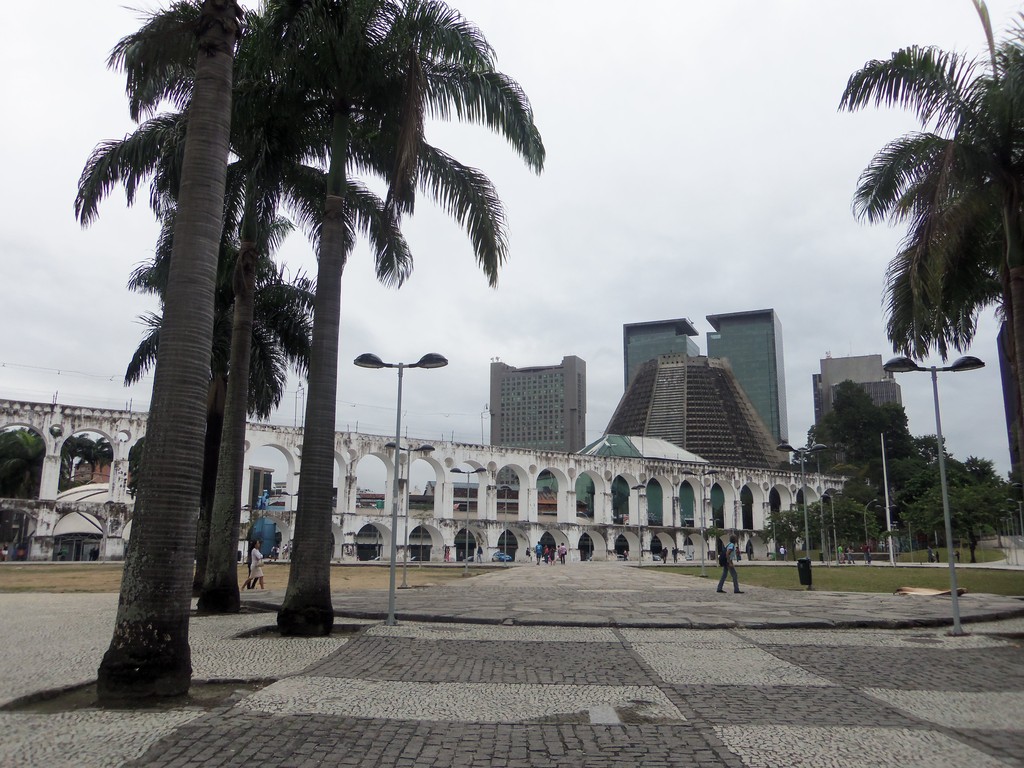
Escalera Selarón
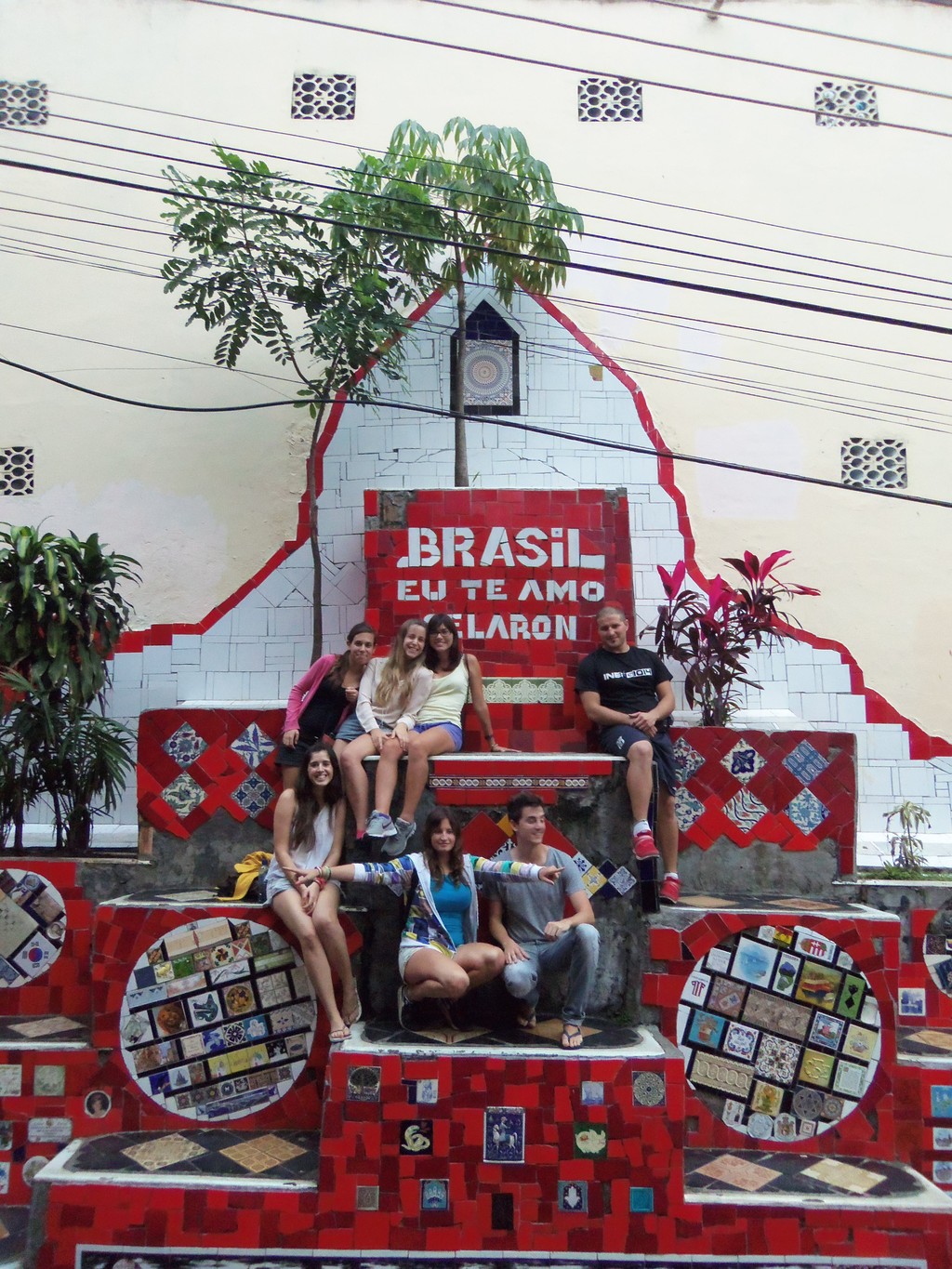
Escalera Selarón: This could be considered one of the most popular touristic sites in Rio. There is 125 meteres of steps and 215 steps, which lead to the Santa Teresa convent. As its name indicates, it was decorated by the artist Selarón, who dedicated his life to maintaining the stairs, replacing and adding new mosaics.
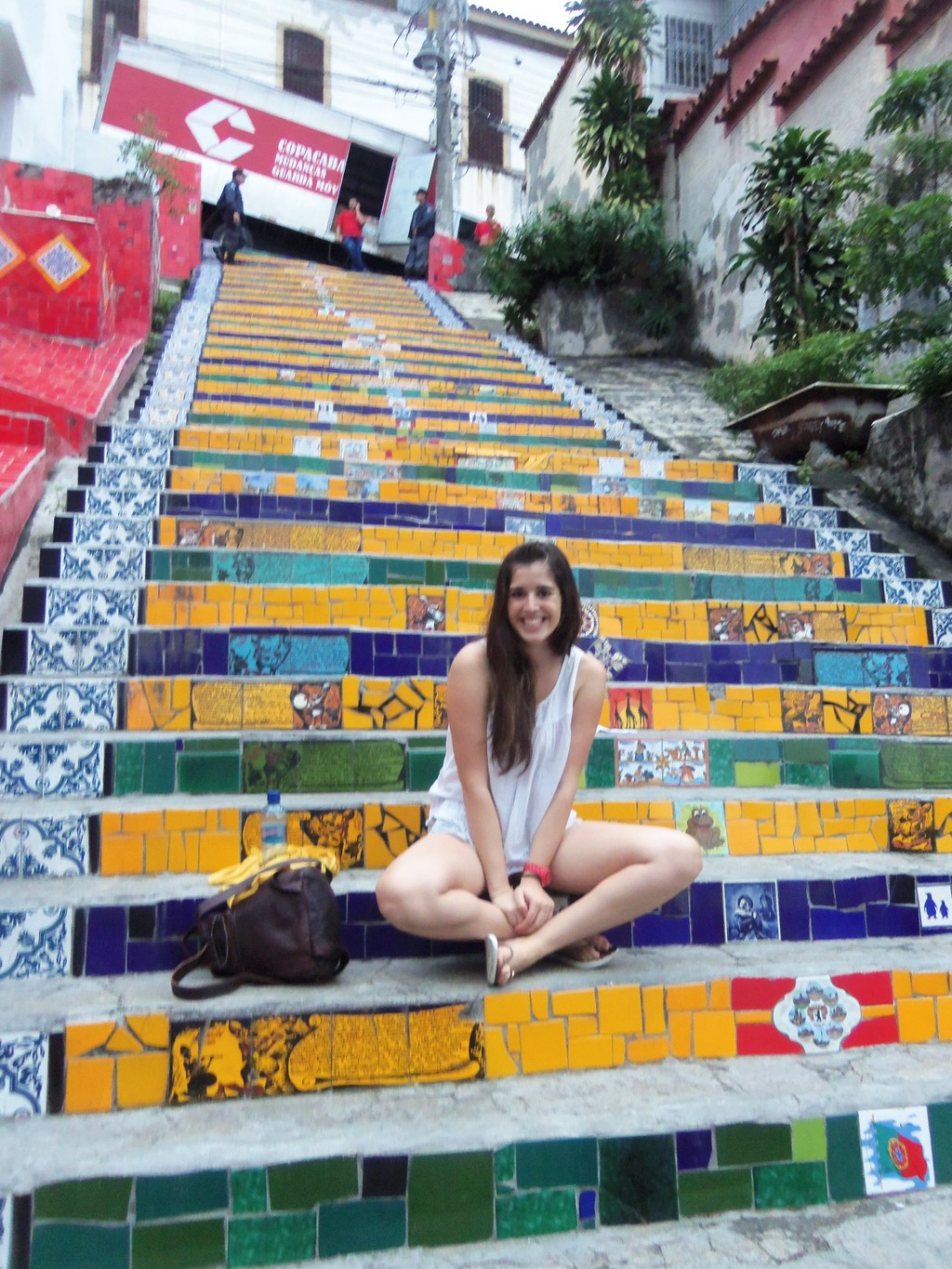
On the 10th January 2013, Jorge Selarón was found lying dead on the stairs. Maybe suicide, maybe a murder, his work on the stairs had come to an end. The stairs consist of more than 2000 tiles, mostly red, full of messages and images of the Brazilian flag.
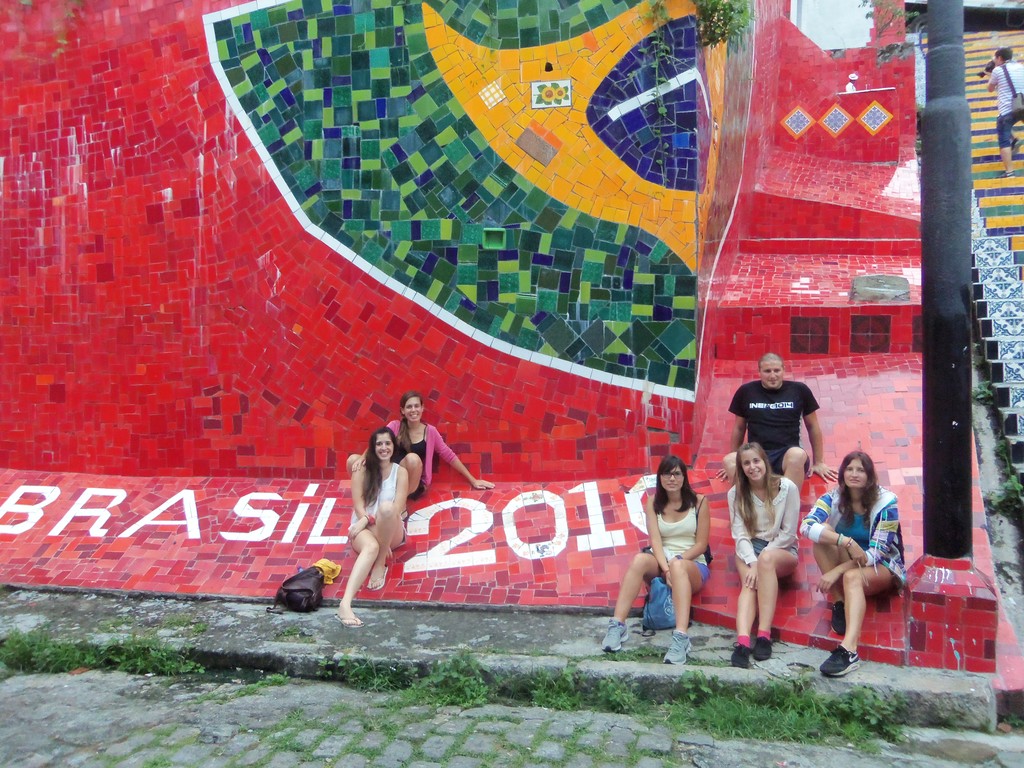
As an icon of Rio de Janeiro, it is the subject of numerous publications and television programs, and even appeared in video clips of singers from around the world. The tiles also refer to locations around the world, Spain being a principal location: from shields of different Spanish football teams, to images which refer to the pilgrimage routes of 'Camino de Santiago', including images of scallop shells and the 'Cathedral de Compostela'.
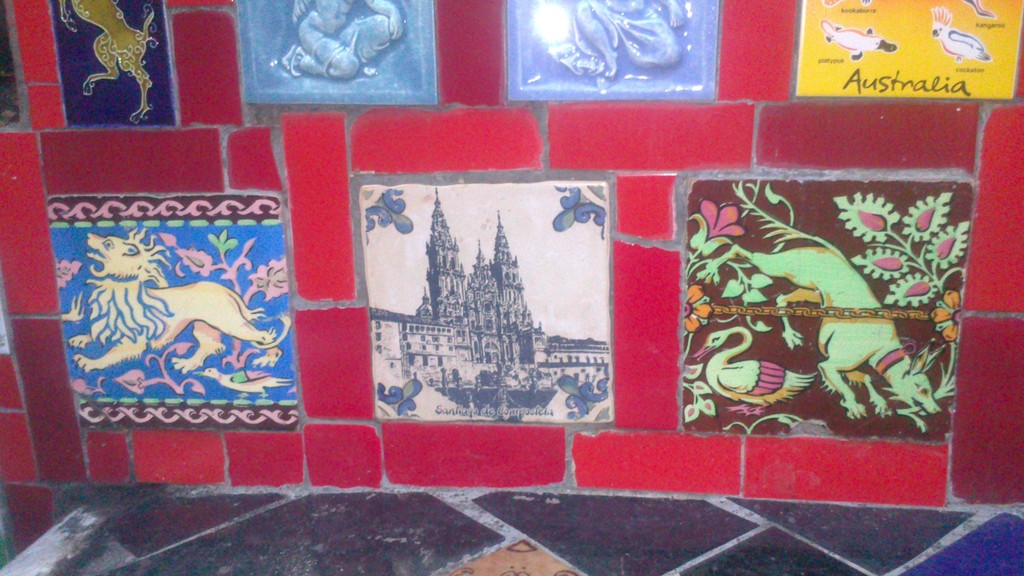
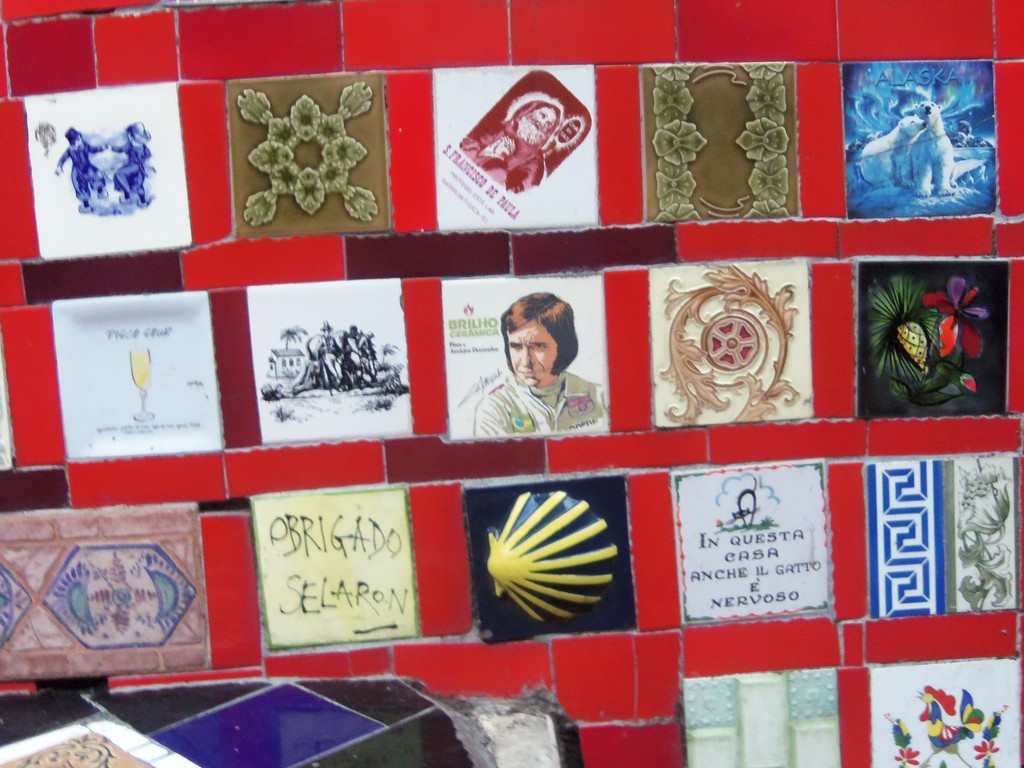
 As well as all the symbolic images, you may find messages such as this on the stairs:
As well as all the symbolic images, you may find messages such as this on the stairs: 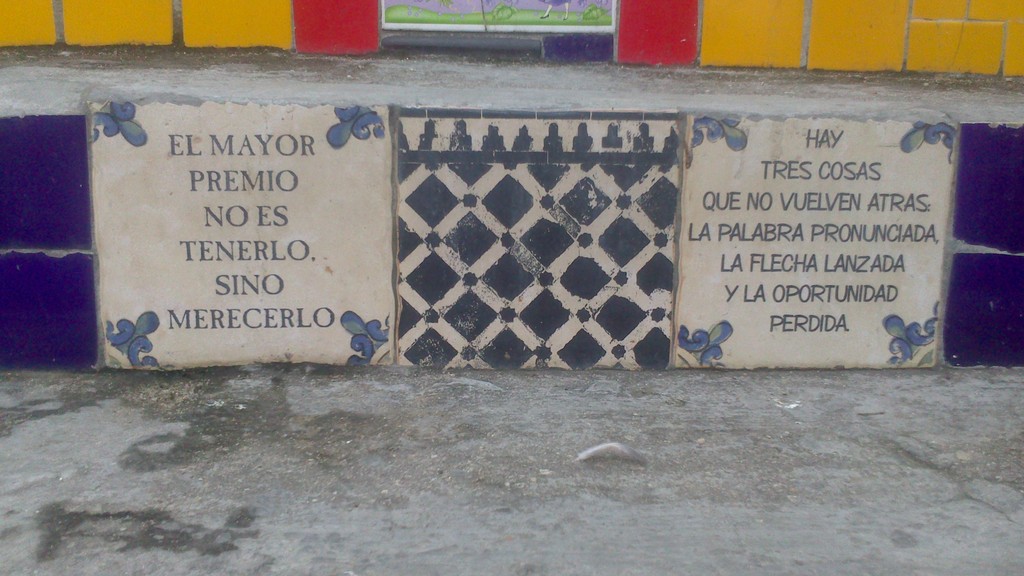
Other tourist places in Lapa which are less popular than the first two, are the 'Public path' in front of the 'Arcos de Lapa' and the 'National Music School'. The first thing we wanted to do when we arrived in Lapa was to eat. At the restaurant we went to, we saw this poster stuck to a newsstand. It says that tourists have to pay if they want information unless they are eating in the restaurant, then they can have information for free. I guess they are fed up of people asking for directions and information when they walk past the restaurant!

After lunch, we set out to find the 'Arcos de Lapa'. We asked some locals the location, who very kindly indicated that we were just round the corner, if we turned we could almost see it. In my opinion, I expected it to be more preserved: the arches were quite worn, dirty and lacking charm or decoration.
Directly opposite the 'Arcos' were the 'Selarón stairs'. The stairs are just a few meters from the Arc, but because we wanted to explore, we decided to take a detour (but we were wrong, we got lost, which is quite difficult to do! ). We climbed up a steep incline, where we met other tourists who were from Curitiba (another Brazilian city) and in the same situation as us. We reached the top of the "morro de Santa Teresa" and asked a villager who told us that the entrance was at the bottom of the hill, but we could get to them through a small alley which would let us descend the stairs instead of climbing them. Our problem was that a moving truck was blocking the entrance at the bottom, so we did not see the entrance.
Once we got to the stairs, we were pleasantly surprised by the amount of colour and detail in the mosaics. It was pretty crowded, it was the most steps I had ever seen. We stopped every two steps to get photos, look at the mosaics or read the messages that the author had written.
After that, we wandered through the city, to discover the backstreets of the city and visited this church.
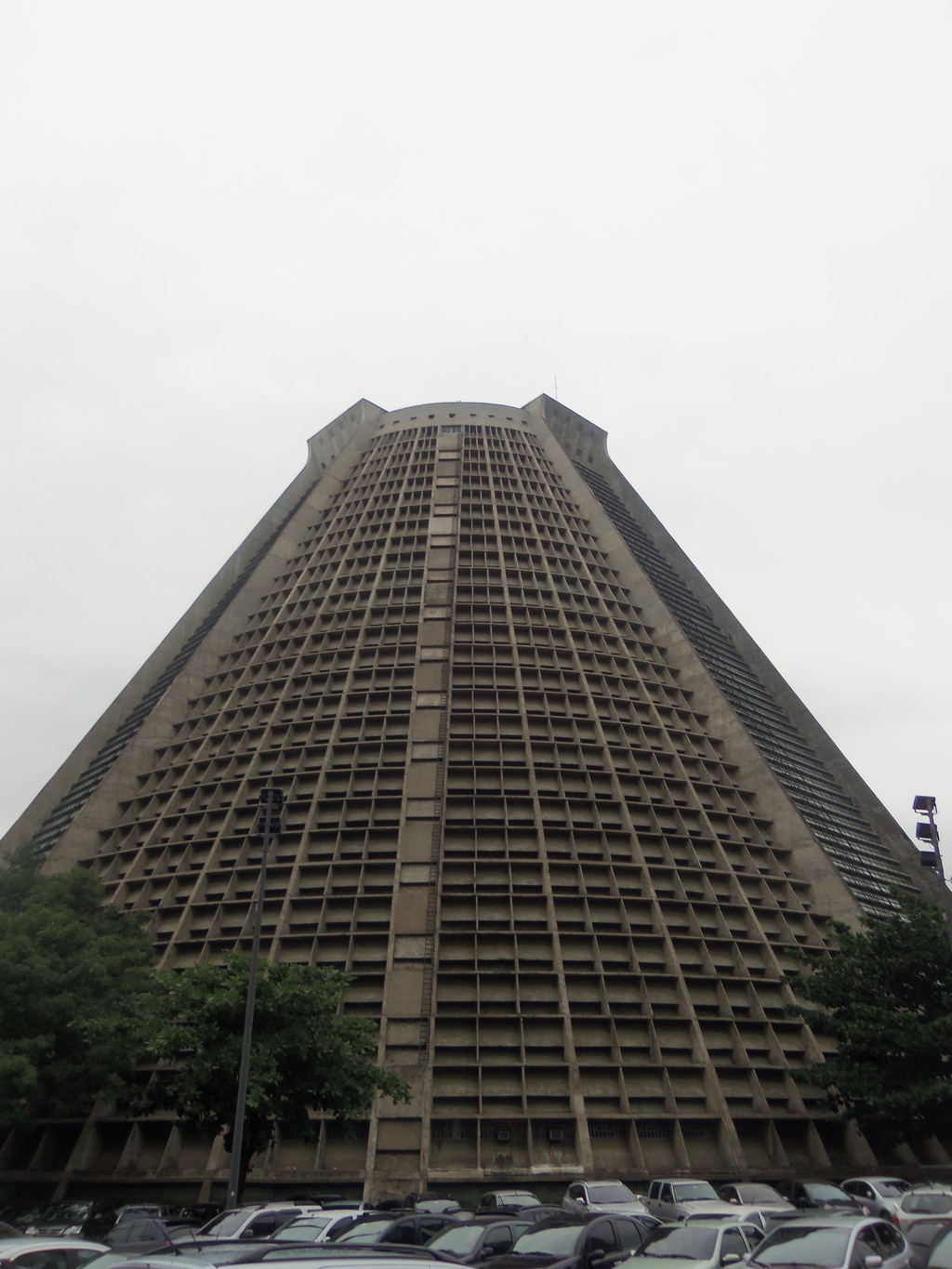
It is true that in Brazil there are a variety of religions, or different aspects of Christianity, which are very different from the traditional church buildings that we know. We were surprised this was a religious building and intrigued to go inside. It is a metropolitan Cathedral for Catholics, dedicated to San Sebastian, and a great 75 meters tall and 96m in diameter.
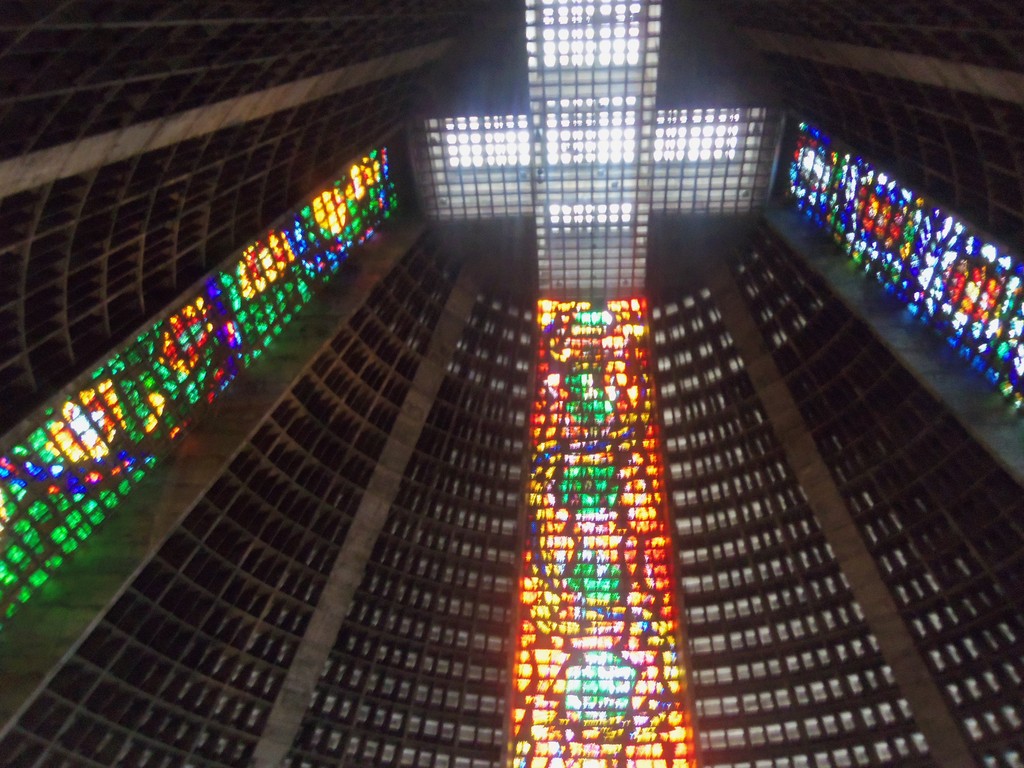
If you want to visit this neighborhood, but you are staying elsewhere in Rio de Janeiro, it is a matter of learning how to get there from the different areas of Rio. There are very frequent buses that connect the various parts of the city. Or other options include using the subway system or even taking a taxi (which I recommend if you are partying late at night).
I hope this has been a good guide to the famous and controversial neighborhood of Lapa, if you ever decide to visit.
Photo gallery
Content available in other languages
- Español: Lapa, el barrio más bohemio de Rio
- Polski: Lapa- największe siedlisko cyganerii w Rio
- Italiano: Lapa, il quartiere più bohémien di Rio
Rate and comment about this place!
Do you know A tourist in Lapa ? Share your opinion about this place.





























